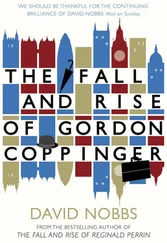Based on Betty and Amy’s calls, it’s possible that the brilliant computer entrepreneur and former Israeli commando Daniel Lewin saw the hijackers attack the flight attendants and heroically leapt into action. But unknown to Lewin, seated directly behind him was the fifth hijacker, Satam al-Suqami, whose name Nydia Gonzalez heard as “Tom Sukani.” In that scenario, when Lewin rose to fight back, Suqami slit his throat, making Lewin perhaps the first casualty of 9/11. Another possibility was that the hijackers had planned all along to begin the takeover by attacking crew members and at least one passenger, to frighten the rest into compliance. In that scenario, Lewin would have been an unwitting victim who happened to be sitting in the targeted seat.
Amy told Michael Woodward the three hijackers in business class were Middle Eastern and gave him their seat numbers, key pieces of evidence to identify the terrorists. Betty identified the seat numbers of the two hijackers in first class, the Shehri brothers.
Amy told Michael she saw one of the hijackers with a device with red and yellow wires that appeared to be a bomb. He wrote “#cockpit bomb” on his notepad. Betty didn’t mention a bomb, and no one knew if whatever Amy saw was real or a decoy.
On their separate calls, the two flight attendants said they didn’t know whether coach passengers fully understood the peril. Amy told Michael that she believed the coach passengers thought the problem was a routine medical emergency in the front section of the plane. First-class passengers were herded into coach, but in the uproar, it wasn’t clear whether former ballet dancer Sonia Puopolo, business consultant Richard Ross, venture capitalist David Retik, or anyone else who’d been up front mentioned the violence they’d seen.
Amy told Michael that in addition to Betty, the flight attendants who weren’t injured—Kathy Nicosia, Sara Low, Dianne Snyder, Jeffrey Collman, and Jean Rogér—kept working throughout the crisis, helping passengers and finding medical supplies.
Betty and Amy relayed all the information they could, as quickly and completely as they could, for as long as they could. At 8:43 a.m., roughly a half hour after the hijacking began, Flight 11 changed course again, to the south-southwest. The move put the Boeing 767, still heavy with fuel, on a direct course for Lower Manhattan, the heart of America’s financial community.
At the American Airlines center in Fort Worth, Nydia Gonzalez begged for information: “What’s going on, Betty? … Betty, talk to me… . Betty, are you there? … Betty?”
Betty didn’t answer.
Nydia turned to her colleagues: “Do you think we lost her? Okay, so we’ll like—we’ll stay open.”
Then Nydia Gonzalez added an unintentionally haunting coda to Betty Ong’s bravery: “We—I think we might have lost her.”
AROUND THE SAME time, Amy Sweeney told Michael Woodward: “Something is wrong. We’re in a rapid descent… . We are all over the place.” Another American Airlines employee who overheard the call said she heard Amy scream.
Michael tried his best to calm Amy. He told her to look out the window and tell him what she saw. “We are flying low,” she said. Amy told Michael she saw water and buildings. “We are flying very, very low. We are flying way too low!”
Amy paused. Powerless on the other end of the phone, Amy’s colleague and friend Michael Woodward waited, every second stretching into a lifetime. Less than an hour earlier, he’d stood inside the plane, locked eyes with Mohamed Atta, and waved goodbye to his friends.
Michael heard Amy’s last words, before the call dissolved into static: “Oh my God!—We are way too low!”
UNDER THE COMMAND and control of fanatics bent on murder and determined to commit suicide, American Airlines Flight 11 had been transformed from a passenger jet into a guided missile. Atta’s radio transmissions about returning to the airport and everything being okay were elements of a cruel ruse to pacify passengers and to prevent an uprising against his outnumbered men. He had played on old beliefs about how hijackings occurred and were usually resolved without violence. Even though his lies weren’t heard by Flight 11’s passengers, the radio calls and the hijackers’ advance training and in-flight actions revealed a carefully calibrated plan built on surprise, violence, trickery, and a studied understanding of their targets, all to achieve a barbaric goal.
The Boeing 767 that was American Airlines Flight 11 completed an unapproved, L-shaped path through bright blue skies that covered roughly three hundred miles from Boston, west to Albany, then south over the streets of Manhattan. At the last millisecond of its trip, at a speed estimated at 440 miles per hour, the silver plane’s nose touched the glass and steel of the north face of the 96th floor of the North Tower of the World Trade Center.
TJX planning manager Tara Creamer’s instructions to her husband, John, on how to care for their children would need to last a lifetime.
Cambodian farmers who relied on John Ogonowski would have to find a new teacher and patron. His wife and daughters would be set adrift without their anchor.
Amy Sweeney’s children would have to get to school, and through life, without her.
Betty Ong’s elderly friends would need new rides to doctors’ appointments. Her sister Cathie would never again hear her say “I love you lots.”
Robert Norton’s stepson would have to get married without him.
Daniel Lee’s soon-to-be-born daughter would spend her entire life without him.
Daniel Lewin’s family and his company would have to forge new paths without his genius or his guidance.
Someone else would have to find a health aide for Cora Hidalgo Holland’s mother.
Susan MacKay’s air traffic controller husband, Doug, who planned to have John Ogonowski say hi for him, would have to live with the knowledge that Susan passed through airspace over the Hudson River Valley that he normally controlled.
Dozens of children would grow up without a mother or a father, an aunt or uncle, a grandmother or grandfather. Parents would grow old without a daughter or a son; husbands, wives, and partners would be forced to carry on alone. Grief would grip untold families, friends, colleagues, and strangers, wounded by the deaths of seventy-six passengers and eleven crew members, all murdered by five al-Qaeda hijackers aboard American Airlines Flight 11.
The time of their deaths was 8:46:25 a.m.
More than six minutes later, the two F-15 fighter jets from Otis took flight. They soared south toward New York in pursuit of a passenger jet that no longer existed.
But something terrible was happening on another passenger plane also bound from Boston to Los Angeles.
CHAPTER 5
“DON’T WORRY, DAD”
United Airlines Flight 175
TWENTY-FIVE MINUTES AFTER TAKEOFF FROM LOGAN, WHILE AMERICAN Flight 11 was still airborne, United Flight 175 reached the crystal-blue skies over upstate New York.
With the passage of time and distance came a transfer of ground control from Boston Center to a similar FAA facility called New York Center, located in a sleepy suburb on Long Island. New York Center’s radar scopes covered some of the world’s busiest skies: air traffic over the New York metro area and parts of Pennsylvania.
With the handoff of the flight from Peter Zalewski in Boston Center to his colleagues in New York Center came a new radio frequency for the pilots of Flight 175. At 8:41 a.m., several minutes after being instructed to veer away from Flight 11, they used that new frequency to report the disturbing radio communication they’d heard earlier.
“Yeah. We figured we’d wait to go to your center,” said Captain Victor Saracini. “We heard a suspicious transmission on our departure out of Boston. Ah, with someone, ah, it sounded like someone keyed the mic and said, ah, ‘Everyone, ah, stay in your seats.’”
Читать дальше












